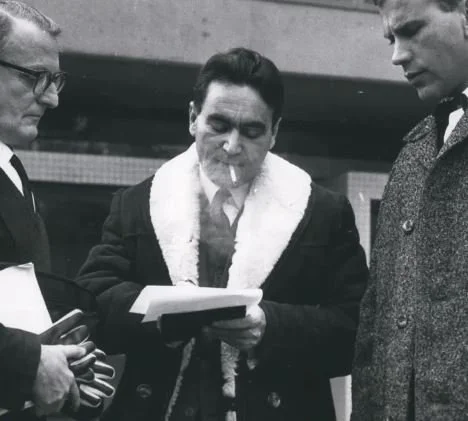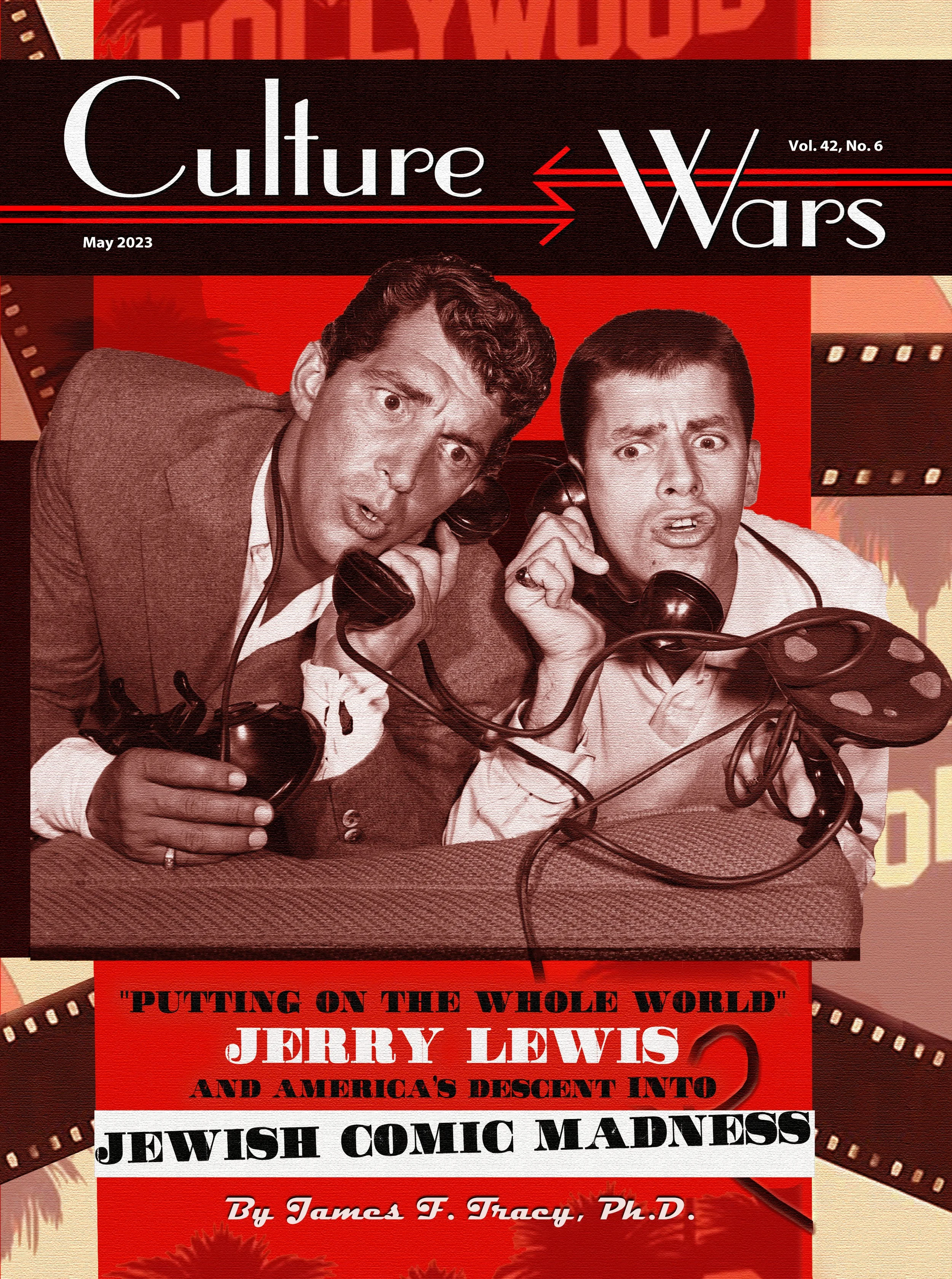The Escape Artist: The Man Who Broke Out of Auschwitz
/Questioning certain details about the Holocaust is not denying it happened. The Jewish communities of Europe suffered considerable hardship and loss of life during World War II. What revisionist historians deny is the traditional narrative that there was a plan to kill one race, the Jews, by a unique method, the gas chambers, and that six million Jews died from this process. What has happened, however, over several years, is that the traditional narrative has developed to such a pitch as to be the equivalent of a religion, to the opposition of which the Jews will allow no argument whatsoever.
This book is part of this movement. It purports to tell the life story of Rudolf Vrba (originally known as Walter Rosenberg) who together with another Slovak Jew, Alfred Wetzler, escaped on April 7, 1944 from Auschwitz and fled to Slovakia. Subsequently, a report was published in German based on the testimonies of the two men. Vrba and Wetzler purported to depict in words and drawings the organization of the Auschwitz camp and claimed that a specific number of Jews had been gassed there up to the moment of their escape. This document has become known as the Vrba-Wetzler Report. This and many other similar books put forward unceasing versions of the traditional story.
It is surprising to read the sub-title of the book, which only refers to Rudolf Vrba, the main subject of this book as “The Man Who Broke Out of Auschwitz to Warn the World.” This is because if there were mass killings going on there, they would surely have been reported long before this time. The British-Jewish historian, Sir Martin Gilbert, makes things clear when he states, “We know that between May 1942 and June 1944, almost none of the messages reaching the west had referred to Auschwitz as the destination of Jewish deportees, or as a killing centre.” As Jürgen Graf explains, “The Auschwitz camp complex was situated in an industrial district that, due to its importance for the wartime economy, could not have escaped the attention of the Allied forces.”
Researchers (for example, Arthur Butz and Walter Laqueur) recognize that this is so. And there is specific evidence also. In the Auschwitz camp complex, 46 private companies took part in various activities. The companies employed free laborers (mainly Polish), who worked together with the inmates and who went home after their shift, or at least on the weekend. In addition, at least 192,300 Auschwitz inmates were transferred to other concentration camps. Furthermore, Danuta Czech’s Auschwitz Chronicle states that the number of released Auschwitz detainees amounted to 1,255. Also, there were short term detainees in Birkenau, in the form of civilian laborers who had breached their contracts. They were detained for a maximum of 56 days. Under these conditions, news of mass gassings in Auschwitz would have spread like wildfire. Within weeks, London and Washington would have heard of it and would have rung the alarm bell. Nothing of the kind happened.
Rudolf Vrba
These facts already cause one to doubt the grandiose claims of this book with its meandering account of Vrba’s affairs until his death in 2006. But in order to cast grave doubt on Vrba’s credibility there is only need for the reviewer to examine one particular part of his life, and this arose after the war. This concerns what is known as the first Zündel trial held in Canada in 1985. Ernst Zündel was a publisher and promoter of right-wing literature. In the early 1980s, Samisdat Publishers Ltd., run by Zündel, published a 32-page booklet entitled Did Six Million Really Die? Written in the early 1970s by a young London University graduate, Richard Verrall (who wrote under the pseudonym “Richard Harwood”), it had been published in England in 1974. Samisdat sent the booklet to hundreds of teachers, ministers, politicians and media to create interest in discussing the topic examined in the booklet, namely did six million Jews really die pursuant to a systematic policy of extermination by Nazi Germany during World War II? No complaints were received by Samisdat regarding the booklet’s factual accuracy. The booklet did contain some errors, but these were minor ones, which played no significant part in the argumentation of the author. The booklet criticized weaknesses in the evidence and arguments set out in the mainstream Holocaust literature and it supplied alternate views.
In 1983, at the instigation of Sabina Citron, head of the Holocaust Remembrance Association, the Attorney General of Ontario filed a complaint against Ernst Zündel under section 177 of the Canadian Criminal Code, which states: “Everyone who willfully publishes a statement, tale or news that he knows is false and that causes or is likely to cause injury or mischief to a public interest is guilty of an indictable offence and liable to imprisonment for a term not exceeding two years.”
Who did the prosecution now bring in as one of their “big guns”? None other than Rudolf Vrba. By then he had testified against Germans during the Auschwitz trials in West Germany. He had later become a British citizen, and had published in 1964 his autobiography, I Cannot Forgive, which was actually written by Alan Bestic.
What is absolutely crucial to any reviewer of The Escape Artist, and by analogy Vrba’s autobiography, is the fact that the complete transcript of the Zündel trial is available online. This consists of 5,060 pages. Of these, Vrba’s testimony is to be found from pages 1244 to 1643, a total therefore of 400 pages, in other words, every single word uttered by him in response to questioning by both counsel and the court. No witnesses previously in trials relating to the Holocaust had been cross-examined and required to answer questions on the comments they had made. So, one would expect this new book to review the 400 pages in great detail. What do we get? A mere one page and a half in a book 359 pages long where there is an implied complaint that Vrba “was questioned hour after hour.” Well, there were proper adjournments, and one should remember that the matters being put forward by Vrba in a criminal trial against a defendant were very serious indeed, requiring proper responses testing the evidence.
And to be honest, this sort of approach, which is contained in the book, is very much in the insulting style of the testimony of Vrba himself. He is portrayed as the great hero putting the counsel for the defense, Douglas Christie, in his place. But no-one reading the transcript could ever come to such a conclusion. Vrba is obstructive and disrespectful from the very beginning of his testimony. True to his reputation, he regularly insulted Christie and the defendant. In fact, Christie at one point politely struck back by suggesting that Vrba must have used trick memory techniques to keep his lies straight. Vrba flashed back, “Should I bring you six million bodies here that are the proof?” “I’d be content with just one autopsy report,” retorted the lawyer, knowing that not one single autopsy of a dead concentration camp inmate has ever shown “gassing” as the cause of death. (Official transcript, pp. 1590-1591).
More important, however, is that within the first few minutes of his testimony Vrba went on to make a staggering admission about his own book, supposedly the “eyewitness” proof of homicidal gassings. Vrba was sufficiently nervous about the question of the credibility of his book, and what Christie’s searching cross-examination would do to it, that he confessed that his book was “an artistic picture . . . not a document for a court.” Here is his statement at this juncture in full:
Therefore, that book should not be considered as a document, but as an artistic picture of the events which has got not more value than the artistic picture of the artist who is here now painting or drawing this courtroom to show to the masses of people who cannot come here to give them some idea what was happening here. And this is approximately my answer in print to explain to you this book (official transcript, pp. 1389-1390)
Here is another attempt by Christie to obtain an answer to a straightforward and highly relevant question:
Q. All the contents are true?
A. I wouldn’t answer in a direct way, to this question, because this is a work of literature, and not a document, and therefore I would like to make certain remarks on the background of the book which will make it more clear to you what the book is about (p. 1388)
On several occasions, Christie asked “Did you say things happened in the book that did not actually happen in fact?” (p. 1391) And “Did you say things that you say that you saw in the book that you did not actually see?” (p. 1392). But finally, the crucial concession is made:
Q. So when you said you perceived things, or saw things in this book, you actually did see them with your own observations.
A. This is nowhere stated in the book that I actually saw them. In the book there are a number of things which I heard from my friend and I have included it in the book (p. 1396).
He agreed that he had never witnessed anybody being gassed to death, but he had heard rumors! Despite a statement in the foreword to his book that he compiled it with a “fanatical respect for accuracy,” he further admitted that his written and pictorial descriptions of Auschwitz crematory were a result of guessing, founded on “what I heard it might look like.”
Christie demonstrated that Vrba had made up the number and location of the “gas chambers” and the crematories in his 1944 report. His 1964 book began with a purported January 1943 visit by Himmler to Birkenau to inaugurate a new crematorium with “gas chamber.” In reality, the last visit by Himmler to Auschwitz took place in July 1942, and in January 1943 the first of the new crematories was still far from finished. Vrba claimed to have a special gift of memory (he called it “special mnemonic principles” or “special mnemonical method”) and seemingly to be everywhere at once. He had calculated that between April 1942 and April 1944 the Germans had “gassed” 1,765,000 Jews at Birkenau alone….
[…] This is just an excerpt from the May 2023 Issue of Culture Wars magazine. To read the full article, please purchase a digital download of the magazine, or become a subscriber!










